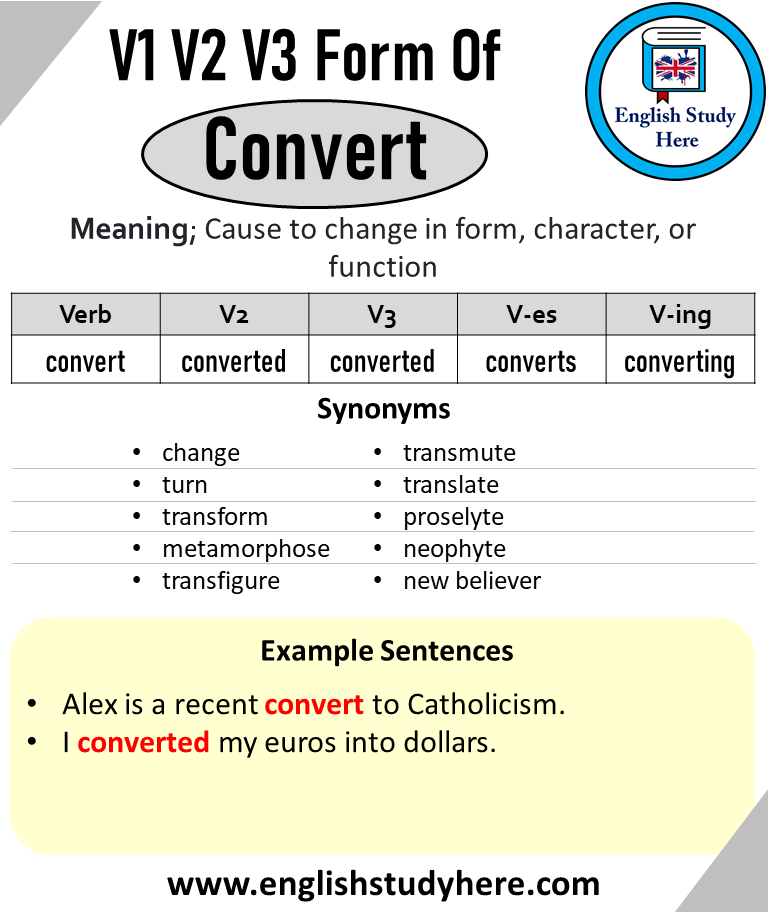Change Past And Past Participle Form V1 V2 V3 V4 V5 Form of Change
Are you trying to master the English language, or perhaps fine-tune your grammar skills? If so, understanding the different forms of verbs is crucial.
One verb that’s often used, yet sometimes misunderstood, is “change. ” We’re diving deep into the past and past participle forms of “change,” known as V1, V2, V3, V4, and V5 forms. Imagine the confidence you’ll feel when you can effortlessly switch between these forms in conversation and writing.
By the end of this read, you’ll have a clear grasp on how to transform your use of “change” in any tense. Ready to enhance your language prowess? Let’s get started.

Credit: englishstudyhere.com
Forms Of Change
The word changecan take different forms. Each form is used in different ways. The base formis simply “change.” This is the V1 form. The past formof change is “changed.” This is the V2 form. The past participleform is also “changed.” This is the V3 form. These forms help us talk about things that happened before.
The V4 formis “changing.” This form is used for actions happening now. The V5 formis “changes.” This form is for describing regular actions or habits. Knowing these forms helps in writing and speaking clearly.
Past And Past Participle
Verbs change form to show time. The verb “change” is no different. In its past form, it becomes changed. This tells us the action happened before. The past participleform is also changed. We use it with helping verbs like “have” or “has”. These forms help us make sentences clear. They tell us when things happened.
| Verb Form | Example |
|---|---|
| V1 (Base) | change |
| V2 (Past) | changed |
| V3 (Past Participle) | changed |
| V4 (Present Participle) | changing |
| V5 (Third Person Singular) | changes |
These forms are key to making sentences. They help us talk about past, present, or future. Knowing them makes writing easier and clearer.
V1 V2 V3 V4 V5 In Detail
The word “change” is a verb. It has different forms. V1 is “change”. This is the base form. V2 is “changed”. This is the past form. V3 is also “changed”. This is the past participle form. V4 is “changing”. This is the present participle or gerund form. V5 is “changes”. This is the present simple form.
Each form has its use. V1 is used for general actions. V2 is used for past actions. V3 is used with helping verbs. V4 shows ongoing actions. V5 is for third person singular.

Credit: englishgrammarhere.com

Credit: englishstudyhere.com
Conclusion
Mastering the forms of “change” is crucial for clear communication. Understanding V1 to V5 enhances writing skills. The present, past, and participle forms each have unique uses. Practice regularly to get familiar with them. This builds confidence in using the language accurately.
Remember, language learning is a journey. Mistakes are part of progress, so keep practicing. Use these forms in everyday sentences. It helps in reinforcing your knowledge. The more you practice, the better you become. Embrace the process and enjoy learning.
Your efforts will pay off in time. Keep going!






